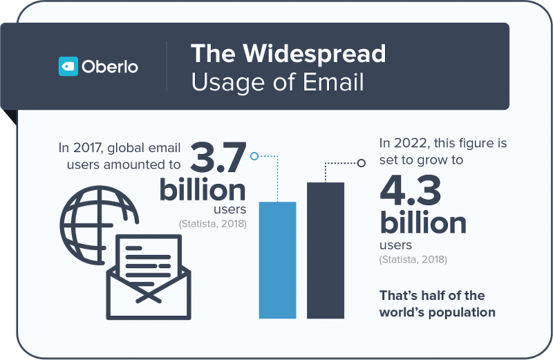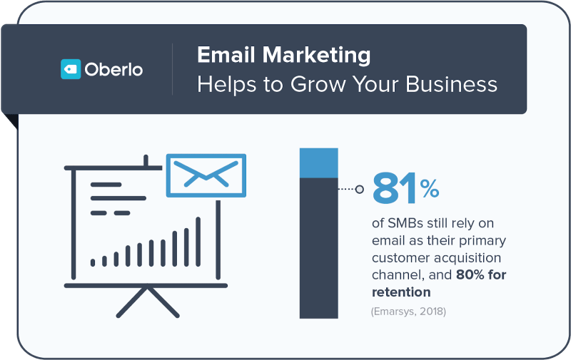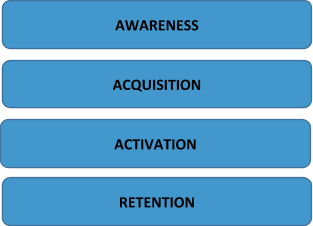Email marketing has come a long way since Gary Thuerk sent the first email marketing blast in 1978. Despite all the other means of communication and marketing channels that have arisen, email is still one of the most ubiquitous forms of communication and a key marketing channel for most businesses. But calculating email marketing ROI can be a struggle for some. Read on to see how the full customer journey factors into yours.

Source: Oberlo. Check out the complete infographic with more email marketing stats on their blog.
Today, global email users amount to virtually half the entire planet’s population. Although this may not be fully accurate considering users have duplicate accounts, this figure is expected to grow steadily. (Statista, 2018).
It is a common misconception that social media and other marketing channels are killing email. In an era of increasingly rapid change, it’s easy to see why some might doubt email marketing ROI. As far back as 1989, experts at Stanford predicted that other technologies would soon replace email. Clearly, they failed to foresee how email would transform marketing.
Although email marketing hasn’t changed much since it’s initial conception, it continues to evolve as new technologies allow for more sophisticated strategies. This can also impact how you calculate email marketing ROI.
Focusing On The Full Customer Journey

According to the data, 81% of SMBs still rely on email as their primary customer acquisition channel, and 80% rely on email for customer retention (Emarsys, 2018). This means email is the primary driver of customer retention and acquisition for small and medium-sized businesses.
Customer retention and acquisition are two vital steps of the customer journey that your email marketing strategy should focus on. But what does focusing on the entirety of the customer journey actually entail?
While a traditional marketer only focuses on driving traffic to a website or service, a marketer who focuses on the full customer journey takes into account awareness, acquisition, activation, and retention.

Will the user visit the website or product?
Will the user engage with the website?
Will the user feel a great user experience and understand the core values?
Will the user come back and use your product again?
The questions posed beside the infographic allow you to understand what each of these steps in the customer journey actually entails. With these answers, you can then determine your email marketin g ROI, as well as how to improve it.
In order for your email marketing strategy to be effective, it needs to take into account each step of their journey. By doing so, you’ll be able to realize the full ROI of email marketing and grow your business.
This is a guest post by Stefanos F. Bournias, a content marketer at Oberlo and an eCommerce entrepreneur. After building and selling his first online businesses, Stefanos began writing on SaaS, Start-ups, E-commerce & Marketing. His primary areas of focus include product sourcing, business strategy, marketing, general management & operational activities.
